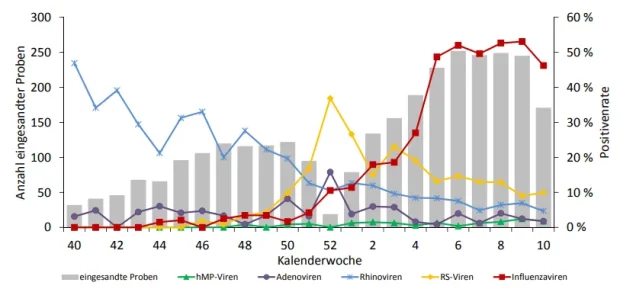Yesterday, CDC advisers voted unanimously to add Corona vaccines to child immunisation schedules, and today the European Medicines Agency approved Pfizer/BioNTech and Moderna vaccines for use in infants in the European Union. I find these developments too depressing to discuss. The doses administered under these rules will kill a small but nontrivial number of children in exchange for nothing at all. That the vaccines don’t prevent transmission, that children are at zero risk from Omicron infection, that all of this pointless – none of this matters. Making these arguments is like talking to a wall for all the effect that it has.
Instead of boring you with the obvious, I want to return to a phenomenon I’ve alluded to a few times now, namely the disappearance of influenza during the pandemic. Every time I mention this, the commentariat voice their scepticism, and I’ve long planned a single post explaining my reasons for thinking a) that influenza really did disappear in 2020 and 2021; b) that this had nothing to do with lockdowns and everything to do with the emergence of a new pathogen and its disturbance of the broader virological ecosystem; and c) that we cannot so easily put this vanishing act down to shifts in testing or diagnosis caused by Coronasteria. To prove these points I’ll use German data, which I’m the most familiar with, but you could argue similarly with CDC numbers, or the statistics of many other countries.
That lockdowns aren’t the reason influenza disappeared is the easiest case to make. Influenza vanished even in countries that never implemented heavy containment measures, like Sweden and Taiwan. Other viruses, meanwhile, like RSV, persisted in open countries, while taking a heavy hit in lockdown-happy regions like Europe. There’s a twofold phenomenon at work here: Lockdowns were just effective enough to hurt the slower-moving mostly harmless viruses we’ve lived with for centuries, but influenza disappeared in almost all jurisdictions, whether they locked down or not. Nor is the vast reduction in international travel a credible reason for the disappearance of flu: Seasonal outbreaks have been a regular occurrence since the 1918 pandemic, when comparative mobility rates were very low indeed.
The disappearance of influenza is also not a mere artefact of testing, or of unreliable PCR tests misdiagnosing the flu as SARS-2, and of this I have two proofs.
The first is influenza surveillance data from before and during the pandemic. Participating sentinel clinics swab patients with respiratory symptoms, and send these swabs to a central testing facility. Each swab is tested for all of the major respiratory viruses.
Here’s the results of this virus survey from the 2018/19 season, by week number:

Red is influenza, yellow is RSV, purplish grey (?) is adenovirus, blue is rhinovirus, and green is human metapneumovirus. The grey bars in the background are the numbers of swabs tested; the prevalence of each virus is expressed as a positivity rate.
Yes, you will say, these statistics are bad, but we just a want a rough idea. There are three patterns to notice:
1) Rhinovirus peaks in the fall and the spring. Thus rhinovirus infections are in (relative) decline for the whole space of this graph.
2) RSV and adenovirus and some of the other common respiratory viruses peak around the winter solstice or just after. Unfortunately, the Robert Koch Institut didn’t track hCoVs in the 2018/19 season, but here’s a recent American paper establishing that, indeed, they have roughly the same peak in January or early February – with the interesting exception of 2020/21, when containment measures plausibly delayed the season:

3) The ordinary influenza peak follows the peak of these winter solstice viruses.
It looks for all the world like virus seasonality is driven mostly by two phenomena: The dark winter months, which create a greater potential for infection; and the apparent interference of viruses with each other. Why do rhinoviruses decline in the fall? Probably because this is when the solstice viruses are on the rise. Why does influenza have peak so late? Perhaps because it has to wait until the solistice viruses have ebbed sufficiently.
Now have a look at the equivalent 2020/21 season report from the middle of the pandemic. It couldn’t be more different:

Note the grey bars in the background. The sentinel clinics during the pandemic actually tested more swabs than in prior years, and none of these came back positive for influenza. They found only a few ordinary human-infecting coronaviruses, relatively normal levels of rhinovirus, and SARS-2. Influenza was gone.




